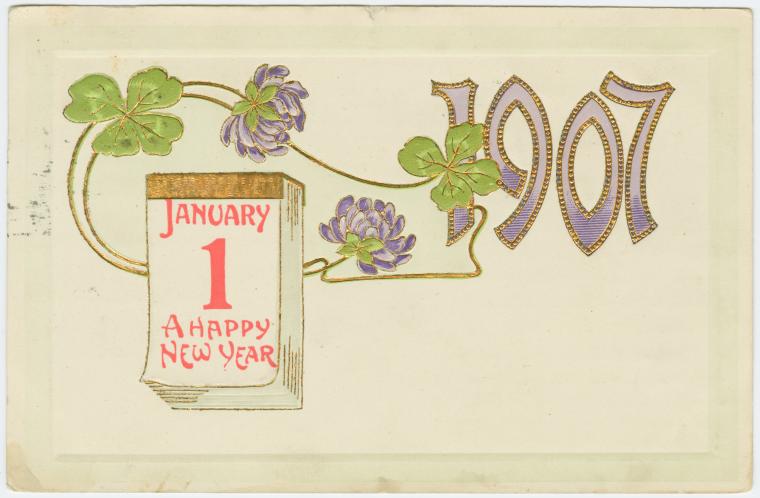Telling Time on New Year's Eve: Why the First Ball Was Dropped in Times Square

It wasn't always that way. But thanks to a time-honored tradition involving a lowered ball, a one-shot opening celebration has morphed into a spectacle that attracts one million revelers to Times Square each year.

One Times Square, formerly the headquarters of the New York Times, stands on an isolated triangle of land at Broadway, Seventh Avenue, and 42nd Street. It has been the site of a major New Year's Eve party every year since the building opened in 1904, the same year the first subway line opened in Manhattan. The inaugural celebration was to fête the opening of the brand-new Times Building, which at the time was the second tallest skyscraper in Manhattan. However, the New Year of 1905 was kicked off with a display of more traditional fireworks set off from the top of the imposing building.
The great success was the party itself. Times Square instantly replaced downtown's Trinity Church as the new go-to place for New Year's jubilation. But shooting fireworks off the building ended only two years later when the city banned them, forcing the Times to find a different symbol for starting the New Year.

In an era of wind-up time keeping, a daily adjustment was needed to keep your clock in harmony with real time. The Western Union Company on Lower Broadway dropped a metallic ball from a spire atop their building every day at noon so that people on the street and in ships in the harbor could synchronize their watches. Similarly, a ball drop happened every day at England's Royal Observatory in Greenwich.
Therefore, in 1907, the association of a dropped ball with time-keeping was commonplace. The Times adopted the custom and even took it a step further by adorning its ball with 100 20-watt bulbs so that it could be seen at night from the ground far below.
Since 1907, the ball drop has signified the start of the New Year in all but two years, 1942 and 1943. During those war years, New York was subject to a "dim-out" of lights intended to protect the city from Axis bombings. But even in wartime, enormous crowds still gathered in Times Square to usher in the New Year.
The New York Times no longer occupies the building at One Times Square, but the tradition they started now extends far beyond the geographic boundaries of the square or even the Eastern time zone. It is estimated that over one billion people around the globe watch the ball drop each year.
This article was originally published in the Huffington Post on December 27, 2010.
Sources:
- Lee, Nancy, ed. The Century in Times Square. 1999.
- Nevius, Michelle & Nevius, James. Inside the Apple: A Streetwise History of New York City. 2009.
- Tell, Darcy. Times Square Spectacular: Lighting Up Broadway. 2007.
- Times Square Alliance. "New Year's Eve — All About the Ball." Retrieved on 15 December, 2010.
- Times Square Alliance. "New Year's Eve — History." Retrieved on 15 December, 2010.
Read E-Books with SimplyE
 With your library card, it's easier than ever to choose from more than 300,000 e-books on SimplyE, The New York Public Library's free e-reader app. Gain access to digital resources for all ages, including e-books, audiobooks, databases, and more.
With your library card, it's easier than ever to choose from more than 300,000 e-books on SimplyE, The New York Public Library's free e-reader app. Gain access to digital resources for all ages, including e-books, audiobooks, databases, and more.
If you don’t have an NYPL library card, New York State residents can apply for a digital card online or through SimplyE (available on the App Store or Google Play).
Need more help? Read our guide to using SimplyE.
Comments
New Year's Eve
Submitted by Katalina (not verified) on December 28, 2011 - 6:56pm
new years eve ball drop
Submitted by Constance still (not verified) on January 1, 2015 - 2:02pm
The ball dropping is the end
Submitted by Gwendolyn Vera ... (not verified) on December 31, 2016 - 11:48pm
Good article. Thank you for
Submitted by Anna (not verified) on January 4, 2020 - 6:45am